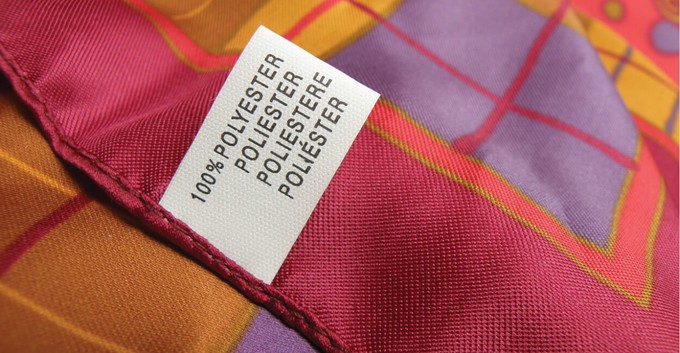
Polyester dominates the global textile industry. It’s all around us, from the shirt you are wearing right now to the linings in your sneakers. With over half of all textile fibres made from polyester, and nearly 80% of all synthetic fibres falling under its banner, polyester is the beating heart of fast fashion. But beneath its affordability and versatility, lies a complex and troubling environmental footprint.
Polyester’s Core Problem: Built to Last, for Better or Worse
Polyester, specifically polyethylene terephthalate (PET), is a type of plastic made from petroleum. Its production is energy-intensive, relies on finite fossil fuels, and emits vast amounts of carbon dioxide. Moreover, it is non-biodegradable. That means, the polyester-made fabrics in your wardrobe can linger around in landfills for more than 200 years.
While cotton also comes with its share of sustainability challenges, particularly in water and pesticide use, polyester’s fossil-fuel base and microplastic pollution give it a uniquely persistent footprint.
Even during regular use, polyester fabrics shed microplastics. These tiny, nearly invisible fragments that make their way into rivers, oceans, and even our bodies. It’s estimated that washing synthetic clothing releases over half a million tons of microfibers into the ocean each year.
Fast Fashion’s Dependence on Polyester
The fast fashion industry thrives on cheap, quick-to-produce materials. Polyester fits the bill perfectly: low-cost, durable, wrinkle-resistant, and easy to manufacture at scale. It can even mimic luxury fabrics like silk and velvet, allowing brands to churn out trendy clothing at a fraction of the price.
However, this economic convenience externalises massive environmental costs: carbon emissions, water pollution, and waste. Unfortunately, for the average consumer, none of these effects are reflected in the price tags of ultra-cheap clothing.

Recycled Polyester: A Potential Polyester Alternative
Recycled polyester (rPET), made from post-consumer plastic bottles, reduces dependence on virgin petroleum and lowers greenhouse gas emissions by up to 79%. It’s currently the most widely adopted “sustainable” polyester alternative.
However, turning food-grade plastic bottles into textiles locks the material out of closed-loop recycling. Once a plastic bottle becomes a t-shirt, it can’t go back to being a bottle. From there on, it’s a one-way street to the landfill.
Biodegradable and Bio-Based Polyester: Sustainable Alternatives
Newer solutions include biodegradable polyesters made from renewable sources like corn, sugarcane, or agricultural waste. Materials such as PLA (Polylactic Acid) and PBS (Polybutylene Succinate) are designed to break down under certain conditions within a few years.
The catch? These polyester alternatives may not degrade effectively in real-world environments. Many need industrial composting or specific moisture and oxygen conditions, which are rarely found in landfills.
Moving Beyond Polyester with Sustainable Alternatives
Real progress lies in exploring materials beyond polyester and its alternatives. Natural fibres like organic cotton, linen, and hemp offer biodegradability, lower water use, and minimal chemical input. Regenerated fibres like Tencel (Lyocell) use closed-loop systems that minimise waste and chemical discharge. Even innovative materials like Piñatex (pineapple fibre) and mycelium-based leather are gaining traction as ethical, circular alternatives.
However, these materials are not perfect either. In fact, they often come with higher costs or scalability limitations.
So, Can Polyester Ever Truly Be Sustainable?
Polyester, in its current form, is unsustainable. Recycled and biodegradable options offer partial fixes, not complete solutions, as polyester alternatives. For polyester to have a place in a sustainable future, it must be reimagined from the ground up, chemically, commercially, and culturally. Until then, the question isn’t just whether polyester can change, but whether the industry will allow it to.
